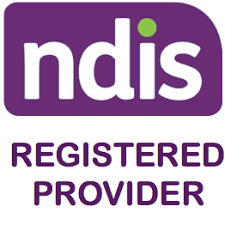Apps
Certificate
5 hours of professional development
Resources
Course book: Positive Behaviour Support Strategies for Students with Autism Spectrum Disorder.
Price: $165
Register on Teachable via credit card or email Dolly for invoice
Positive Behaviour Support (PBS) provides a framework for understanding Autism and the individual's behaviour within the context of their environment. These valuable insights lead to implementing proactive, educational, and reinforcement strategies to improve their quality of life. By using this , individuals with autism can achieve greater independence, improved social interactions, and a better quality of life.
Course Outcomes
This self-paced Autism Spectrum Disorder (ASD) online course will give you:
-
A toolkit of practical strategies to assess, manage and prevent behaviours of concern,
-
Guidance to develop a behaviour support plan,
-
Free copy of ebook ‘Positive Behaviour Support for Students with Autism Spectrum Disorder,
-
A certificate of participation of 5 hours CPD upon successful completion,
The course is divided into 3 modules:
Module 1: Introduction to Autism Spectrum Disorder
This module focuses on what Autism Spectrum Disorder is, how it presents and what causes it. The module sections are:
-
Defining ASD,
-
Characteristics of ASD,
-
Impact of Characteristics on Social Communication, Learning and Behaviour,
-
Onset of ASD,
-
Causes of ASD,
-
Prevalence of ASD.
Module 2, Positive Behaviour Support
This module focuses on ways to manage ASD working with the positive behaviour support framework. The model sections are:
-
Learn about data collection (intensity, frequency, duration),
-
Learn and identify safe and appropriate behaviour de-escalation management strategies,
-
Learn and identify appropriate behaviour minimisation, evidence based interventions and prevention strategies,
-
Learn and identify appropriate strategies and tools for helping a student develop cognitive, communication, behavioural and social skills.
Module 3, Positive Behaviour Support and Autism Spectrum Disorder
-
Help students with ASD cope with change
-
Help students with ASD cope with unstructured times
-
Help students with ASD cope with transitions between activities, people or places
-
Help students with ASD develop communication skills
-
Use visual communication systems to help improve communication, play and a positive identity
-
Develop an Individual Education Plan
Begin this self-paced course through Teachable, where you'll be required to pay the course fee of $165 via credit card. If you would prefer an invoice or have multiple participants please email us: dolly@behaviourhelp.com
Click on START THIS COURSE to begin.
Once enrolled, you will receive a Welcome email with the course information and you can complete the course at your own pace. Your certificate will be given at the end of the course.
Course tasks to complete and send via email to dolly@behaviourhelp.com
Included is a free course book:

Autism spectrum disorder background and further information
Positive Behaviour Support (PBS) is an effective framework for understanding and addressing the needs of individuals with Autism Spectrum Disorder (ASD). PBS focuses on understanding the reasons behind behaviours of concern and developing proactive strategies to support positive behaviours and enhance the individual's quality of life. Behaviourhelp.com offers lots of connecting resources such as books, apps and other online courses to help individuals with ASD.
These Autism resources alongside this course aims to give parents, educators and children the knowledge and training to help individuals with a diagnosis of Autism live their best lives.
All of the resources are self paced and can be accessed at any time. If you are taking the course but want to involve other family members or colleagues on your journey, feel free to share resources with them.

